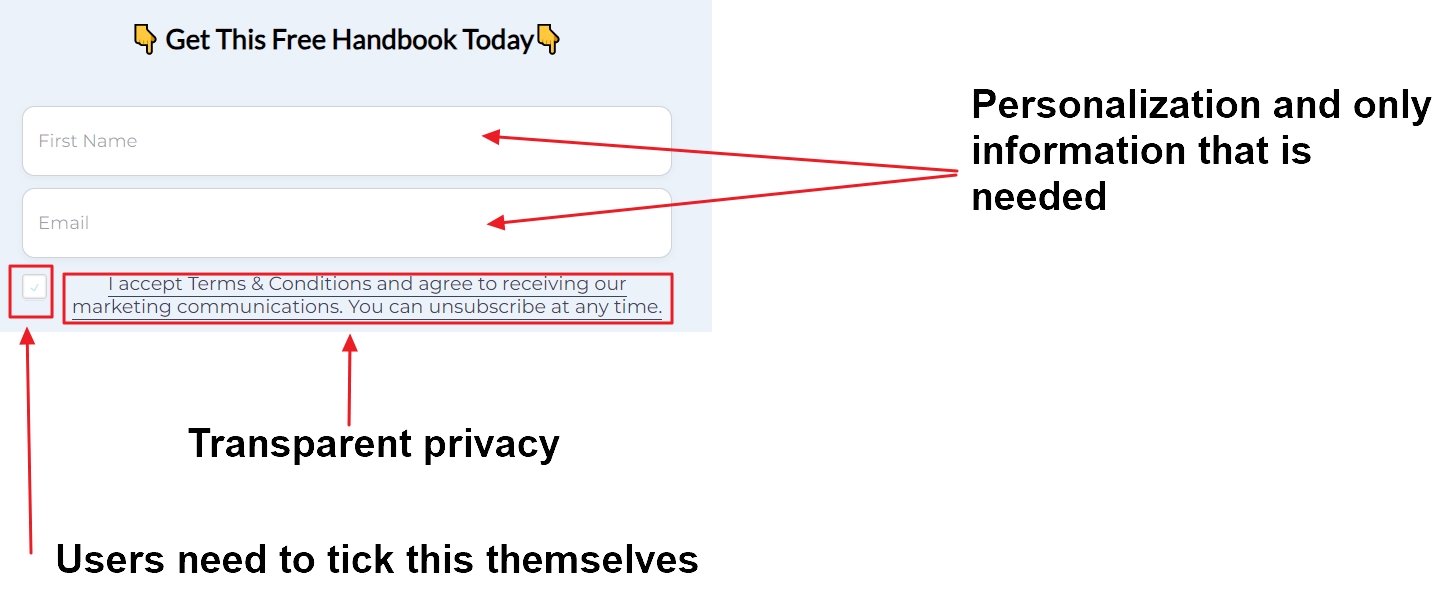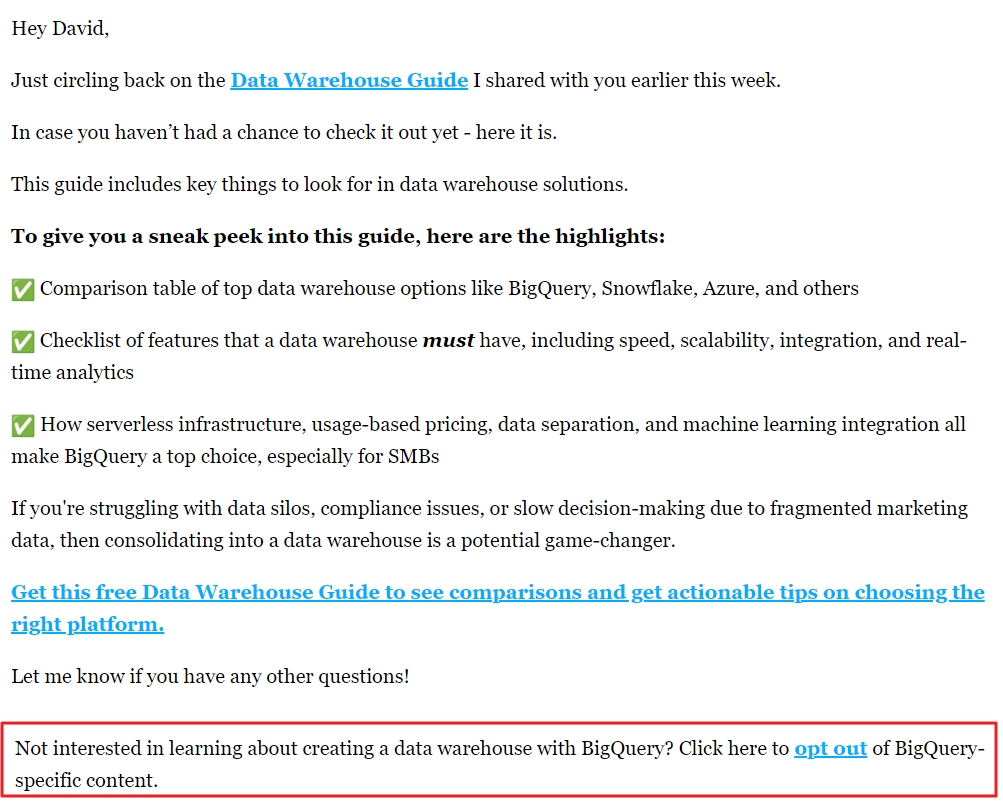Tracking users without cookies is the next big challenge for marketers in 2024. At first sight, the solution may seem easy. Replace your analytics and MarTech tools with cookieless alternatives. But is this really the best possible strategy? Let’s find out…
Key Takeaways
- In 2024, 3P cookies will stop working.
- Going cookieless as a business or organization has advantages.
- Thinking in terms of MarTech tools is less sustainable than completely rethinking your marketing and data collection strategies.
- Explore 5 alternative data collection strategies and implement them ASAP.
- Download our free expert privacy guide and use it as the North Star for marketing in 2024 and beyond.
Fact. Third-party tracking cookies will end. Sooner or later, you will have to switch to alternative marketing and analytics platforms, tools and strategies.
That can be scary.
And it is painful.

However, if you keep the benefits of getting rid of cookies on top of your mind – and agenda -, the process will be rewarding in the long run.
1. Cookies got a bad rep
Consumers, privacy advocates, and governments hate tracking cookies for good reasons. Mind that 3rd and 1st party cookies are different beasts.
The evil ones are the so-called 3P cookies. The sooner you get rid of them, the more likely your audience and visitors will perceive you as a trustworthy business or organization.
2. Tracking users without consent can lead to penalties
For sure, you have read plenty of headlines of businesses that got a hefty financial penalty for violating privacy laws, like the CCPA, GDPR, etc.
It doesn’t happen to the big players only, as Min Hwan Ahn testified while collaborating on our expert privacy guide for marketers..
“I've been part of fines settlement cases involving both small and big entities. relevant example is a social media startup that was fined heavily for non-compliance with GDPR, which led to their bankruptcy.”
Third-party cookies are installed on a device, or in the browser of that device. That worked well in the early days of the internet, but nowadays, users jump between browsers and devices all the time.
The cookie doesn’t follow users on their journey and the data they collect is unreliable.
For instance, John Doe visits an ecommerce store on his laptop, returns later with his wife’s tablet, and finally purchases with his son’s phone.
Same person, but for analytics and advertising platforms, they are three different users, or visitors.
Enough about reasons to stop relying on cookies. It's time to explore the best alternatives…
Tracking cookies are used by apps, sites and platforms. That doesn’t mean that switching to tools that don’t use cookies is, by default, the best and only choice.
Keep in mind that not all tools are ready for a cookieless world. That doesn’t make it easier, but it also doesn’t mean that you have to wait.
Think bigger and in terms of data and marketing strategy instead of tools.
Here's what I mean with that.
1. Analyze your historical business data
From the moment you get your first client, you start collecting valuable data that drives your business forward.
It is different from marketing data, but it is most likely data you obtained 100% legally.
For example: in order to comply with tax regulations, your customers have to hand over some of their personal data to you. Address, email address, company name, etc.
Of course, you cannot start using this info to send out promotional emails, but nobody is forbidding you to get creative with the data you have.
This is what you could do:
- Anonymize email addresses from customers and keep the part after the “@”. Now you have a list of the websites of your B2B customers.
- Nobody forbids you to visit these.
- It’s completely legal to make an ideal customer business profile based on this list.
- Nobody can prevent you from looking up similar businesses in popular regions of your customers.
- And it’s not illegal to follow these businesses on social media and interact with them.
Effortless? No.
Compliant with privacy regulations? You bet.
Successful? That’s up to you. You can, for example, set up landing pages for the most popular regions or industries. You can also collect testimonials of your customers as social proof. Etc.
All those little things together can have an enormous impact. And remember, no cookie needed.
You can also take it a step further and start collecting new personal data in a privacy-friendly way.
2. First-party data collection
First-party data is information site visitors and customers voluntarily share with your business or organization. You can collect it offline or online in ways people actually love. And without using tracking cookies.
Here are some ways to collect new first-party data without cookies.
- Set up an interactive quiz on your site. That can, for instance, be to show personalized content and apply the best practices of online behavioral targeting.
- Surveys. You can ask your audience and customers feedback about your (upcoming) products, courses, services, support, etc. You can organize this online, through phone calls, etc. Not one single cookie needed.
- Offer online calculators and tools that actually help people achieve their goals faster. At Data Driven U, for instance, we offer tons of free resources for data driven-marketers. Voluntary feedback helps us to even better understand their deepest struggles.
- Start a community and allow your customers to communicate with you and other members directly. Our digital marketing Insiders community, for instance, is a private slack group where digital marketers can share knowledge, as well as connect with peers.

Note that first-party data is subject to privacy regulations.
- You don’t own the data you collect. If someone requests to delete their data, you are legally bound to do that.
- People have the right to know what will happen with their personal data. Explain clearly what you will use it for, how long and where you will store it, etc. Privacy pages, or Terms and Conditions are the ideal place to be transparent about how you deal with the data you collect.
- You can only collect it with explicit prior consent.
For example, you can only download our Privacy-Led Marketing Handbook if you tick the checkbox yourself.

These kinds of details make the difference between fake and true respect for privacy.
It can also make the difference between a privacy legislation penalty or not.
Cookies have been a pain in the eye of site owners for years. Setting up consent banners, making sure that no tracking cookies are installed before people agree, etc.
There are many web analytics tools. Some of them are more focused on privacy than others, but you need to take four important aspects into account for analytical tools:
- Do they respect the privacy of your site visitors?
- Do they collect reliable business and marketing data?
- How hard are these solutions to implement?
- What do they cost? Free tools have a price too.
For example, Google Analytics 4 tracks visitors with first-party cookies. But GA4 can also work without cookies.
In that case, you need to set up Google Analytics 4 as a server-side tagging analytics tool. Explaining the ins and outs is out of the scope of this article, but here you can find more detailed information.
4. Leverage your Customer Relationship Management (CRM) Systems
Customers are the core of any business and the best you can do is to keep their data safe in a CRM. Again, that is a lot of valuable data and it is obtained in a privacy-friendly way.
- Customers who enter a loyalty program, do this by themselves.
- Recurring purchases are voluntary choices.
Good CMRs can be integrated with your site or marketing platforms, like, for instance, your web shop. That opens the door to product recommendations, based on:
- Anonymous purchase behavior of other customers. No cookie needed.
- The purchase history of customers who are logged into their account.
If your CRM is linked to your marketing tool, you can also easily collect first-party data.
In the DDU newsletters from Jeff Sauer, you only need to click to no longer receive newsletters about certain topics.

The big advantage, of course, is that this gives readers control over what information they receive.
Here is the funny thing.
The more control your audience or customers have over their data, the less likely they are to say goodbye.
Now, this particular example combines first-party data collection, an email marketing tool, and marketing automation magic.
Let’s move to the last strategy.
5. Use a data mart or data warehouse
Even if you collect first-hand data, you want to make sure that it is not spread over a zillion other tools or spreadsheets for two reasons.
- When analyzing data, you want to have as much data as possible. Leaving out some important metrics may lead to painful business decisions.
That is different from the famous quote by Jeff Sauer:
You don’t need 100% of the data
But if you miss vital information, you might as well take a blind guess.
- The more you spread data across tools, the riskier it becomes that it gets in the wrong hands.
There are many ways to set up a data mart. But, if you are using Google Analytics 4, you can connect it with Bigquery.
This will provide you with a solid foundation where you can collect, store and analyze website data without headaches from annoying cookies.
These 5 data collection strategies are not the only options. But you need to start somewhere.
And that brings me to one more item that needs your attention…
The biggest risk of switching to cookieless tracking solutions is waiting.
In digital marketing, nothing comes good from postponing.
The good news is that you have already taken the first step. Getting informed is key before you turn your business and marketing into a well-oiled machine that runs on trust, instead of cookies. .
What’s your best next move?
As you have figured out, tracking without cookies is a challenge.
The bigger your organization and budget, the better you need to be prepared.
Complying with privacy rules is like running a marathon. Applying cookieless marketing strategies gets you a step closer to the finish.
Don’t risk lagging behind your competitors. If you do, it will cost you a lot of resources to catch up with them.
Also, consumers and businesses that have tasted cookieless sweetness are not likely to return to organizations that treat personal data as garbage.
To help you move forward to becoming a privacy-led organization, our team has created a great resource in collaboration with experts in the field.
- It’s free.
- It’s up-to-date.
- It’s complete.
- It’s composed and peer reviewed by marketing and privacy experts.
- It saves you tons of research time.
Grab your copy of the Privacy-Led Marketing Handbook now.
On behalf of the Data Driven U team, thank you for being here. We wish you the best with getting rid of those bittersweet tracking cookies.
